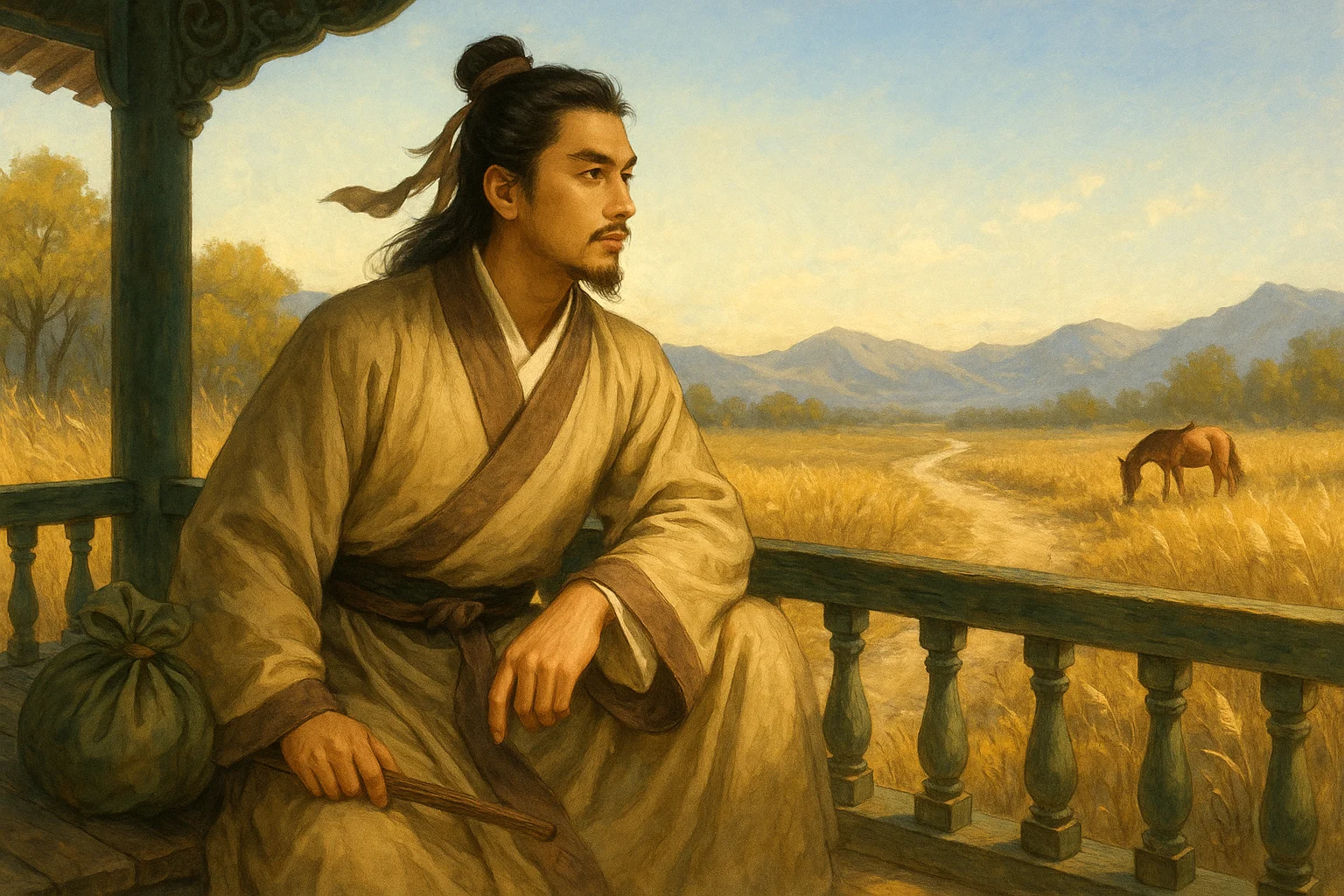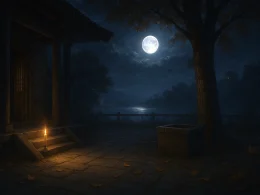From Wangwu’s southern cliffs, Luoyang gleams,
Pine-clad shrines level with the clouds it seems.
Oak leaves at my window rustle low—
All night I heard the whispering snow.
Original Poem
「雪二首 · 其二」
司空曙
王屋南崖见洛城,石龛松寺上方平。
半山槲叶当窗下,一夜曾闻雪打声。
Interpretation
Composed during the golden age of Tang Xuanzong's reign (circa 750 CE), this companion piece to Sikong Shu's snow series shifts from Chang'an's imperial vistas to the meditative quietude of mountain monasticism. Likely inspired by the poet's pilgrimage to Wangwu Mountain, the poem transforms a snowy temple into a sanctuary for the wandering soul—its crystalline stillness offering respite from political turbulence while epitomizing Shu's signature style of "clarity in seclusion" (清逸).
First Couplet: "王屋南崖见洛城,石龛松寺上方平。"
Wángwū nán yá jiàn Luò chéng, shí kān sōng sì shàngfāng píng.
From Wangwu's southern cliffs, Luoyang glimmers— / Stone shrine and pine-veiled temple level the heights.
The lines construct a spiritual sightline: the distant capital ("glimmers") contrasts with the proximate sanctuary, where "level" (平) describes both terrain and tranquil mindstate. The temple's elevation—physically above the secular city, philosophically beyond worldly turmoil—embodies the Tang ideal of "reclusion within sight of civilization" (望中隐).
Second Couplet: "半山槲叶当窗下,一夜曾闻雪打声。"
Bàn shān hú yè dāng chuāng xià, yī yè céng wén xuě dǎ shēng.
Oak leaves at mid-slope brush the window— / All night long, snow's whisper filled the air.
Sensory minimalism reigns: the tactile "brush" of leaves and auditory "whisper" of snow magnify solitude's acuity. That the poet "heard" (闻) snow implies extraordinary perceptual refinement—a monk-like attunement to nature's subtlest language. The couplet exemplifies Tang "stillness-activation" (静中动), where quietude heightens awareness of micro-movements.
Holistic Appreciation
Unlike the grand majesty of "Snow I," "Snow II" embodies quiet, ethereal beauty. The poem unfolds through the poet’s observations and dwelling place—viewing Luoyang from the southern mountains, hearing snowfall beneath his roof—blending sight and sound into a transcendent realm. The couplet "stone shrine, pine temple" evokes a Zen-like atmosphere, reminiscent of a monk’s silent retreat amid nature’s hush. Alone in the mountain temple through a cold night, separated from the world by the sound of wind and snow, the poet maintains a detached clarity from worldly affairs. This ethereal state mirrors both external scenery and inner reflection. Though concise, the poem resonates deeply, standing as a masterpiece of five-character landscape poetry.
Artistic Merits
- Sensory Harmony, Serene Imagery
The interplay of "seeing" Luoyang and "hearing" snowfall creates a multidimensional atmosphere—vivid yet hushed. - Emotion in Stillness, Thought in Silence
While depicting a quiet mountain snowscape, the poem subtly reveals the poet’s solitude and contemplation, adding profound depth. - Classical Simplicity, Subtle Elegance
With unadorned language and pristine imagery, it epitomizes Sikong Shu’s "quiet and understated" style.
Insights
This poem reminds us to preserve a sanctuary of tranquility beyond life’s clamor. Like the poet listening to snow in a pine-clad temple, we too can find strength in solitude amid nature’s silence. In today’s frenetic world, such moments of stillness offer clarity, cleansing the mind and restoring inner peace.
About the poet

Sikong Shu (司空曙), c. 720 – c. 790, courtesy name Wenming, was a native of Guangping (present-day Yongnian County, Hebei Province). A renowned mid-Tang dynasty poet, he was one of the "Ten Literary Masters of the Dali Era," alongside Lu Lun, Qian Qi, Han Hong, Li Duan, and others. Though his life lacked illustrious achievements, his poetry—marked by genuine emotion in simplicity and profound contemplation in solitude—secured him a unique place in mid-Tang literary circles.












